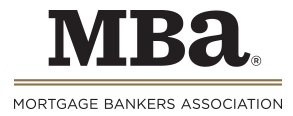WASHINGTON, D.C. – RealEstateRama – Homebuyer affordability improved slightly in September, with the national median payment applied for by purchase applicants decreasing to $2,155 from $2,170 in August. This is according to the Mortgage Bankers Association’s (MBA) Purchase Applications Payment Index (PAPI), which measures how new monthly mortgage payments vary across time – relative to income – using data from MBA’s Weekly Applications Survey (WAS).
“Although there was a modest improvement in affordability last month, higher rates and low housing inventory are both keeping many would-be buyers out of the housing market,” said Edward Seiler, MBA’s Associate Vice President, Housing Economics, and Executive Director, Research Institute for Housing America. “Challenges remains as 2023 comes to an end, but MBA is forecasting for a slight rebound in originations and a moderation in mortgage rates in 2024.”
An increase in MBA’s PAPI – indicative of declining borrower affordability conditions – means that the mortgage payment to income ratio (PIR) is higher due to increasing application loan amounts, rising mortgage rates, or a decrease in earnings. A decrease in the PAPI – indicative of improving borrower affordability conditions – occurs when loan application amounts decrease, mortgage rates decrease, or earnings increase.
The national PAPI (Figure 1) decreased 0.7 percent to 173.8 in September from 175.0 in August due to lower typical application amounts dominating higher interest rates. With this decrease, the PAPI is 3.6 points lower than its record level in May 2023. Median earnings were up 4.5 percent compared to one year ago, and while payments increased by 11.0 percent, the strong earnings growth means that the PAPI is up 6.3 percent on an annual basis. For borrowers applying for lower-payment mortgages (the 25th percentile), the national mortgage payment decreased to $1,437 in September from $1,444 in August.
The Builders’ Purchase Application Payment Index (BPAPI) showed that the median mortgage payment for purchase mortgages from MBA’s Builder Application Survey increased from $2,609 in August to $2,640 in September.
Additional Key Findings of MBA’s Purchase Applications Payment Index (PAPI) – September 2023
- The national median mortgage payment was $2,155 in September —down $15 from August. It is up $214 from one year ago, equal to an 11.0% increase.
- The national median mortgage payment for FHA loan applicants was $1,920 in September, up from $1,909 in August and up from $1,566 in September 2022.
- The national median mortgage payment for conventional loan applicants was $2,180, down from $2,187 in August and up from $2,003 in September 2022.
- The top five states with the highest PAPI were: Idaho (280.0), Nevada (267.1), Arizona (241.8), California (227.9), and Florida (225.8).
- The top five states with the lowest PAPI were: Alaska (121.4), Connecticut (125.5), New York (126.7), West Virginia (127.5), and Louisiana (130.3).
- Homebuyer affordability increased slightly for Black households, with the national PAPI decreasing from 176.0 in August to 174.8 in September.
- Homebuyer affordability increased slightly for Hispanic households, with the national PAPI decreasing from 163.0 in August to 161.9 in September.
- Homebuyer affordability increased slightly for White households, with the national PAPI decreasing from 177.4 in August to 176.2 in September.
About MBA’s Purchase Applications Payment Index
The Mortgage Bankers Association’s Purchase Applications Payment Index (PAPI) measures how new mortgage payments vary across time relative to income. Higher index values indicate that the mortgage payment to income ratio (PIR) is higher than in a month where the index is lower. Contrary to other affordability indexes that make multiple assumptions about mortgage underwriting criteria to estimate mortgage payment level, PAPI directly uses MBA’s Weekly Applications Survey (WAS) data to calculate mortgage payments.
PAPI uses usual weekly earnings data from the U.S. Bureau of Labor Statistics’ Current Population Survey (CPS). Usual weekly earnings represent full-time wage and salary earnings before taxes and other deductions and include any overtime pay, commissions, or tips usually received. Note that data are not seasonally adjusted.
MBA’s Builders’ Purchase Application Payment Index (BPAPI) uses MBA’s Builder Application Survey (BAS) data to create an index that measures how new mortgage payments vary across time relative to income, with a focus exclusively on newly built single-family homes. As with PAPI, higher index values indicate that the mortgage payment to income ratio (PIR) is higher than in a month where the index is lower. To create BPAPI, principal and interest payment amounts are deflated by the same earnings series as in PAPI.
The rent data series calculated for MBA’s national mortgage payment to rent ratio (MPRR) comes from the U.S. Census Bureau’s Housing Vacancies and Homeownership (HVS) survey’s median asking rent. The HVS data is quarterly, and as such, the mortgage payment to rent ratio will be updated quarterly. The HVS data is quarterly, and as such, the mortgage payment to rent ratio will be updated quarterly. MPRR data was not featured in the September 2023 data.
For additional information on MBA’s Purchase Applications Payment Index, click here.
Contact
Falen Taylor
(202) 557-2771


